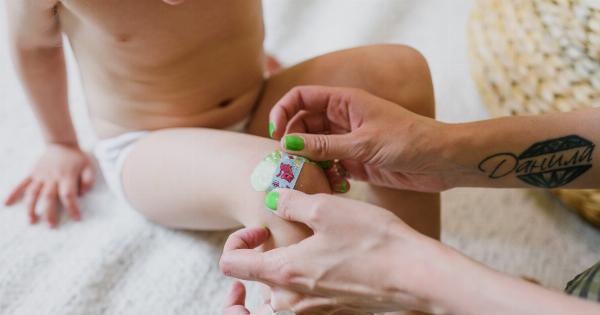Bracelets are a popular accessory that can add style and personality to any outfit. Unfortunately, they can also become a source of discomfort and even injury if they get stuck on your wrist.
Whether it’s due to a tight fit, a malfunctioning clasp, or accidental entanglement, getting a bracelet unstuck can be a tricky situation. In this article, we will explore some first aid solutions for when bracelets become stuck, as well as tips for preventing such incidents.
The Dangers of Stuck Bracelets
Having a bracelet stuck on your wrist might seem like a minor inconvenience, but it can lead to various complications. If a bracelet is too tight, it can restrict blood flow to the hand and fingers, causing numbness, tingling, or swelling.
This condition, known as compartment syndrome, can be serious and may require immediate medical attention. Additionally, a stuck bracelet can cause skin irritation, bruising, or even cuts if pulled forcefully.
Assessing the Situation
Before attempting any solutions, it’s important to assess the severity of the bracelet getting stuck. If it’s simply a matter of a tight fit or an unfamiliar clasp, a gentle approach might be sufficient.
However, if the bracelet is causing significant pain, numbness, or if there is visible damage to the skin, seeking professional help is advised.
First Aid Solutions
Here are some first aid solutions for when your bracelet gets stuck:.
1. Relax and Stay Calm
Panic can exacerbate the situation and might lead to rash actions that could worsen the problem. Take a moment to breathe deeply and remain as calm as possible. This will help you think clearly and approach the situation with a level head.
2. Lubricate the Area
If the bracelet is stuck due to a tight fit, applying a lubricant can help ease its removal. Soap, lotion, or oil can act as effective lubricants. Gently massage the lubricant around the bracelet and your wrist, allowing it to seep into the small spaces.
This should make it easier to slide the bracelet off.
3. Cold Water Method
In certain cases, bracelets can become stuck due to swelling or heat causing the skin to expand. To counteract this, run cold water over the area or place an ice pack or cold compress on your wrist.
This can help reduce swelling and make it easier to free your wrist from the bracelet.
4. Twist and Turn
If the bracelet has a clasp that is difficult to open, try twisting and turning it gently to release any potential pressure points. Sometimes, the clasp might be stuck due to misalignment or debris, and a slight manipulation can set it free.
Be careful not to apply excessive force, as this could cause further damage.
5. Dental Floss or Thread Method
If the bracelet has a small gap between the links, you can use dental floss or thread to work it through and create enough space to slip your wrist out. Insert the floss or thread into the gap and gently move it back and forth to widen the opening.
This method requires patience and finesse, so take your time and proceed cautiously.
6. Seek Assistance
If all else fails, don’t hesitate to ask for help. Enlist the assistance of someone who can provide a different perspective and perhaps offer a solution you haven’t thought of.
They can help assess the situation objectively and provide additional support when needed.
Preventing Bracelet Stuck Incidents
While it’s impossible to completely eliminate the risk of a bracelet getting stuck, there are some preventive measures you can take:.
1. Proper Sizing
Ensure that your bracelets fit comfortably without being too tight. If you’re unsure about the size, consult a jeweler who can help you determine the appropriate measurement for your wrist.
2. Good Quality Clasps
Invest in bracelets with secure and reliable clasps. Cheap or poorly made clasps are more likely to malfunction or become stuck. Opt for reputable brands and inspect the clasp before purchasing.
3. Avoid Accidental Tugging
Be mindful of activities that could easily snag or entangle your bracelet. Certain sports or tasks involving machinery or heavy objects can pose a higher risk.
Consider removing your bracelet before engaging in such activities to minimize the chances of it getting stuck or damaged.
4. Regular Maintenance
Inspect your bracelets periodically for any signs of wear, such as loose links, missing stones, or weakened clasps. Regular maintenance can help identify potential problems before they become severe and ensure the longevity of your bracelet.
The Importance of Prompt Action
When a bracelet gets stuck on your wrist, it’s crucial to address the situation promptly. Delaying action can increase the chances of further complications and damage.
By following these first aid solutions and taking preventive measures, you can minimize the occurrence of stuck bracelets and maintain your safety and comfort.





























